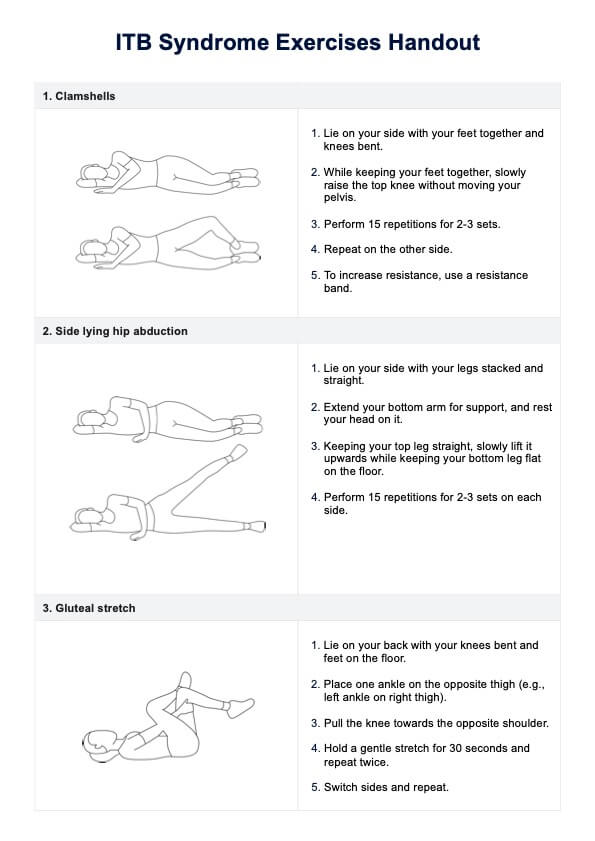Rest, ice, and anti-inflammatory medications can help reduce pain and inflammation quickly. Incorporating targeted stretching and strengthening exercises can also expedite recovery.

ITB Syndrome Exercises Handout
Learn about IT band syndrome exercises with our comprehensive guide for healthcare professionals. Discover the benefits, examples, and effective treatment strategies.
Use Template
ITB Syndrome Exercises Handout Template
Commonly asked questions
Foam rolling and specific stretches can help reduce band tightness. You can apply pressure with a foam roll along the IT band to alleviate some tension.
The iliotibial band itself cannot stretch significantly, but the muscles around it, such as the gluteal and hip muscles, can be stretched to reduce tension on the band.
EHR and practice management software
Get started for free
*No credit card required
Free
$0/usd
Unlimited clients
Telehealth
1GB of storage
Client portal text
Automated billing and online payments











